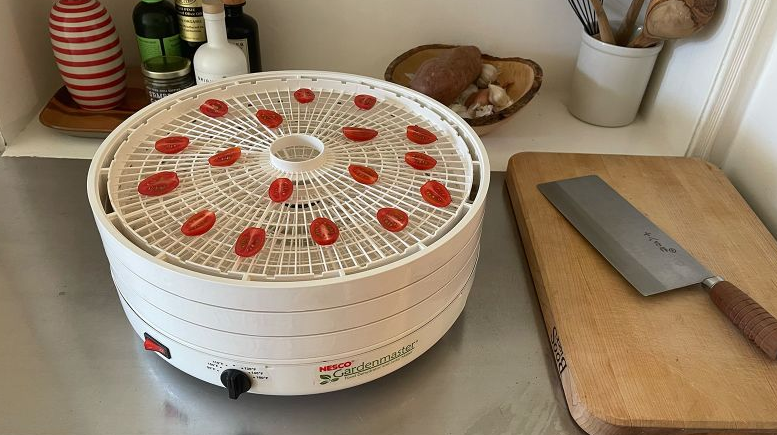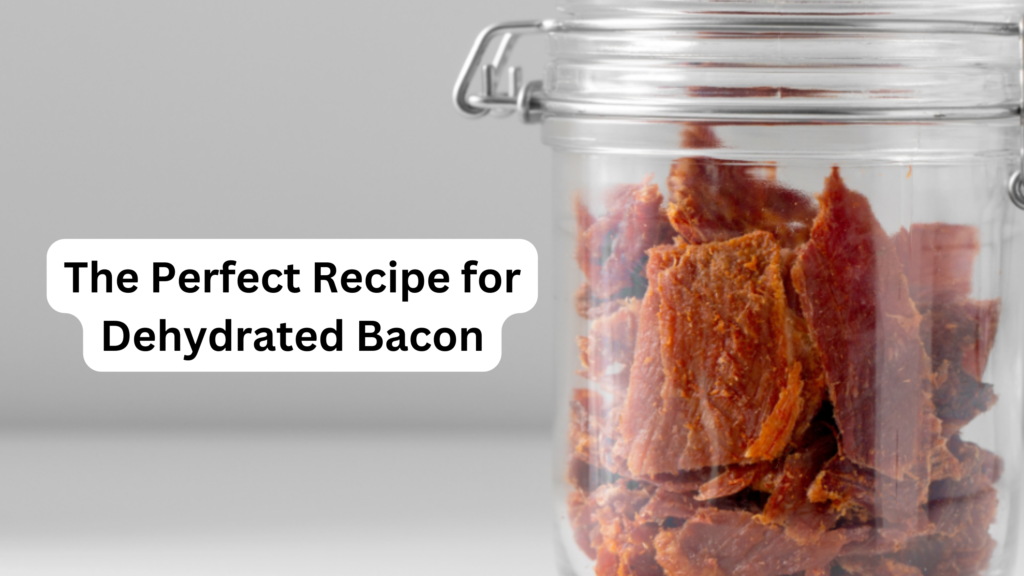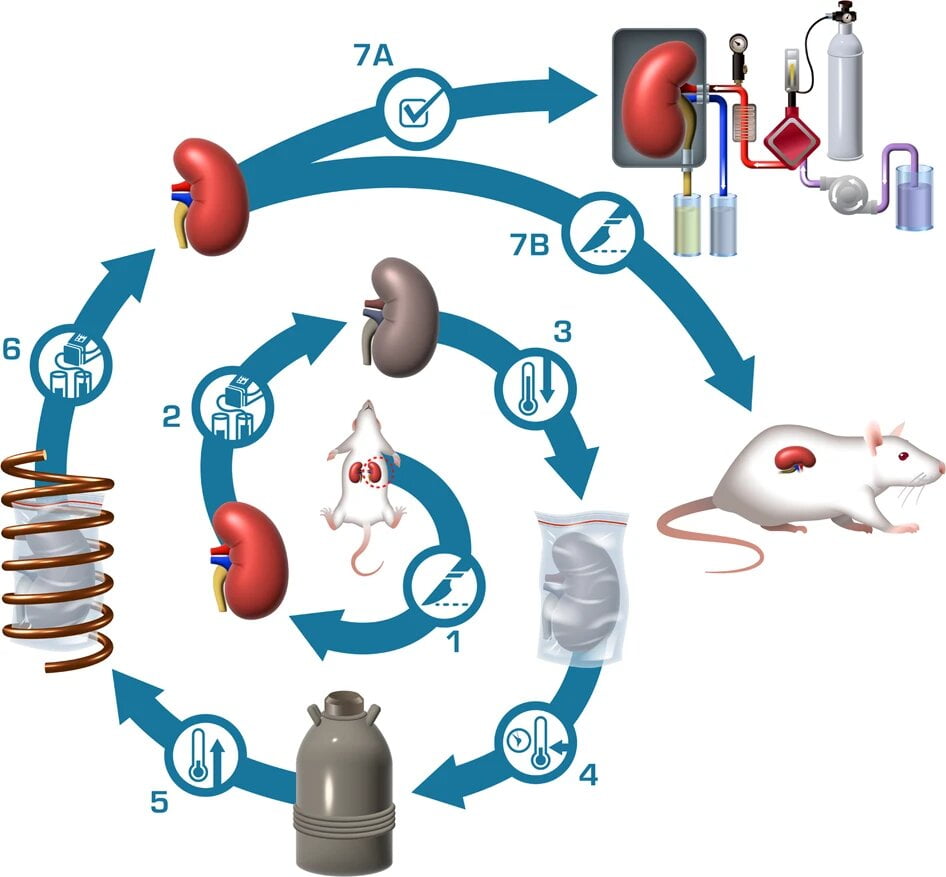Gone are the days of tossing out uneaten bacon because it’s gone limp in the fridge. Dehydrated bacon, a shelf-stable and surprisingly versatile food, is emerging as a game-changer for bacon enthusiasts and health-conscious adventurers alike.
But what exactly is this crispy treat, and how does it stack up against its traditional counterpart?
What is Dehydrated Bacon?
Dehydrated bacon is simply cooked bacon that’s been dried to remove most of its moisture content. This process, typically achieved through a dehydrator or oven, transforms the familiar strips into concentrated flavor bombs with a chewy, jerky-like texture.
Unlike traditional bacon, which needs to be refrigerated and spoils quickly, dehydrated bacon boasts an impressive shelf life of several months, making it ideal for backpacking trips, camping excursions, or simply extending your bacon’s lifespan.
Nutritional Profile Friend or Foe?
Compared to its fresh cousin, dehydrated bacon packs a punch in the calorie department. A single ounce of dehydrated bacon can contain upwards of 150 calories, roughly double that of uncooked bacon. However, it’s important to remember that due to its concentrated nature, you’re likely to consume less dehydrated bacon than you would fresh.
Additionally, the fat content remains roughly the same, making dehydrated bacon a source of healthy fats like monounsaturated oleic acid, linked to improved heart health. But the real surprise lies in the protein department. Dehydrated bacon boasts an impressive protein-to-calorie ratio, making it a fantastic option for those following high-protein diets or seeking a satiating snack.
One ounce of dehydrated bacon delivers a whopping 10 grams of protein, compared to just 4 grams in an ounce of uncooked bacon. This protein punch can help curb cravings, boost muscle recovery, and keep you feeling fuller for longer.
Beyond Backpacking Culinary Uses of Dehydrated Bacon

While its extended shelf life makes it a camping and hiking hero, dehydrated bacon’s culinary potential extends far beyond the wilderness. Here are a few ways to incorporate this versatile ingredient into your everyday meals:
- Salads: Crumble dehydrated bacon over your salad for a burst of savory umami and a satisfying protein boost.
- Soups and stews: Add a handful of dehydrated bacon to your favorite soup or stew for extra depth and flavor.
- Pasta dishes: Sprinkle crumbled dehydrated bacon over pasta for a quick and easy protein upgrade.
- Eggs and omelets: Dice dehydrated bacon and add it to your scrambled eggs or omelet for a classic breakfast twist.
- Dips and spreads: Blend dehydrated bacon into your favorite dip or spread for a smoky, salty kick.
- Snacking: Enjoy dehydrated bacon on its own as a satisfying and portable snack.
DIY Dehydration vs. Store-Bought Which Way to Go?
Making your dehydrated bacon offers the ultimate control over ingredients and flavor. Simply cook your bacon to your desired crispness, pat off excess fat, and slice into thin strips. Then, dehydrate the strips at low heat (around 150°F) for several hours until completely dry and brittle.
However, if time is of the essence, store-bought dehydrated bacon offers a convenient alternative. Just be sure to choose brands that prioritize quality ingredients and avoid excessive additives or preservatives.
DIY Dehydrated Bacon Crafting Crispy Perfection at Home

While store-bought dehydrated bacon offers convenience, there’s something undeniably satisfying about creating your own.
Crafting your dehydrated bacon allows you to tailor the flavor profile, control the ingredients, and boast about your culinary prowess. Plus, the aroma of bacon wafting through your kitchen as you dehydrate is an olfactory experience in itself.
Gathering Your Arsenal Equipment and Ingredients
Before embarking on your homemade bacon-drying adventure, equip yourself with the following:
- Sharp knife: Thin, even slices are crucial for consistent dehydration.
- Cutting board: Choose a sturdy surface that won’t dull your knife.
- Paper towels: Absorbing excess fat is key to achieving the perfect texture.
- Baking sheet or wire rack: Opt for an option that allows for airflow circulation.
- Dehydrator or oven: Both methods require low heat and patience.
- High-quality bacon: Choose thick-cut bacon free from nitrates or nitrites for optimal flavor and health benefits.
- Optional flavorings: Get creative with spices like smoked paprika, cayenne pepper, or black pepper.
The Art of the Slice: Preparing Your Bacon
- Pat it dry: Use paper towels to absorb any surface moisture on your bacon. Excess moisture hinders dehydration and can lead to an unpleasantly chewy texture.
- Slice it thin: Aim for slices around 1/4 inch thick. Thinner slices dehydrate faster, while thicker ones tend to shrink significantly and may require longer drying times.
- Flavor with finesse: If desired, sprinkle your bacon slices with your chosen spices. Rub them gently into the meat for even distribution.
Dehydrating Delights Oven vs. Dehydrator

Oven Method:
- Preheat your oven to its lowest setting, typically around 150°F (65°C).
- Line your baking sheet with a wire rack to elevate the bacon and promote airflow.
- Arrange your bacon slices in a single layer, ensuring no pieces overlap.
- Bake for 3-4 hours, flipping the slices halfway through to ensure even drying.
- Check for doneness: The bacon is ready when it’s dry and brittle, but not crumbly. It should snap easily when bent, not crack or chew.
Dehydrator Method:
- Follow the manufacturer’s instructions for setting your dehydrator to the lowest temperature setting, usually around 145°F (63°C).
- Arrange your bacon slices on the dehydrator trays in a single layer.
- Dehydrate for 4-6 hours, checking for doneness periodically.
Tips for Success:
- Patience is key: Don’t rush the drying process. Rushing can result in unevenly dried bacon or inadequate moisture removal, leading to spoilage.
- Check regularly: Keep an eye on your bacon throughout the drying process. Dehydration times can vary depending on your equipment and slice thickness.
- Cool completely: Once your bacon is dry, allow it to cool completely before storing.
Storing Your DIY Dehydrated Bacon
Proper storage is crucial for preserving the quality and flavor of your homemade dehydrated bacon. Transfer the cooled bacon to airtight containers or resealable bags and store them in a cool, dark place. Properly stored, your DIY bacon can last for several months, making it the perfect pantry staple for quick snacks, camping trips, or emergency rations.
Dehydrated Bacon: A Worthy Contender?

Whether you’re a seasoned backpacker or simply seeking a shelf-stable protein source, dehydrated bacon offers a unique and flavorful option. Its impressive nutritional profile, versatility in the kitchen, and extended shelf life make it a worthy contender to the traditional bacon throne.
So, the next time you’re craving that smoky, savory goodness, consider venturing beyond the fridge and giving dehydrated bacon a try. You might just be surprised by its delicious and convenient charms.
Resources & References
- National Center for Biotechnology Information: https://www.nih.gov/
- USDA FoodData Central: https://fdc.nal.usda.gov/
- Dehydrator Reviews: https://www.amazon.com/GURU-HUNU-Dehydrated-Vegetables-Emergency/dp/B0B725BLQD
Disclaimer: This article is for informational purposes only and is not intended to be a substitute for medical advice. Please consult with a healthcare professional before making any dietary changes.


